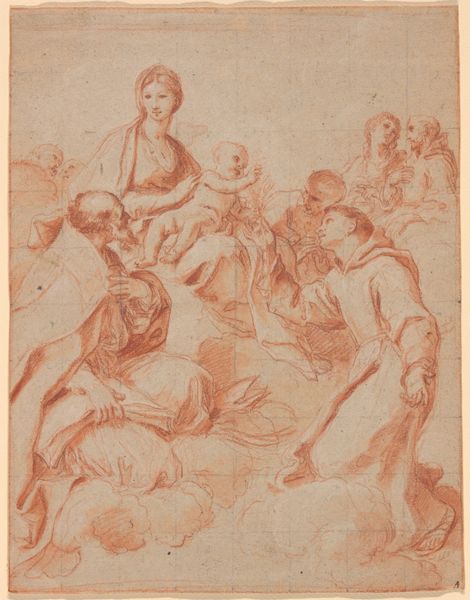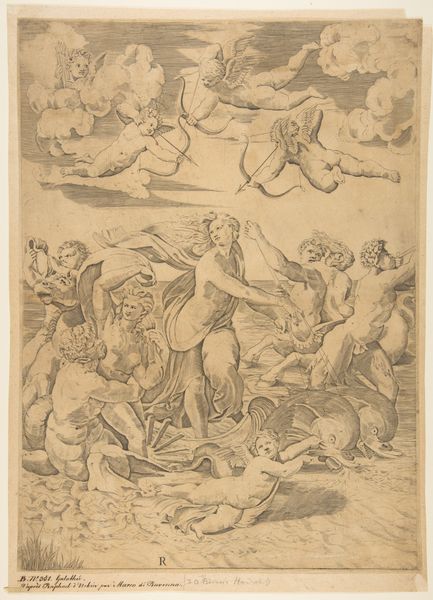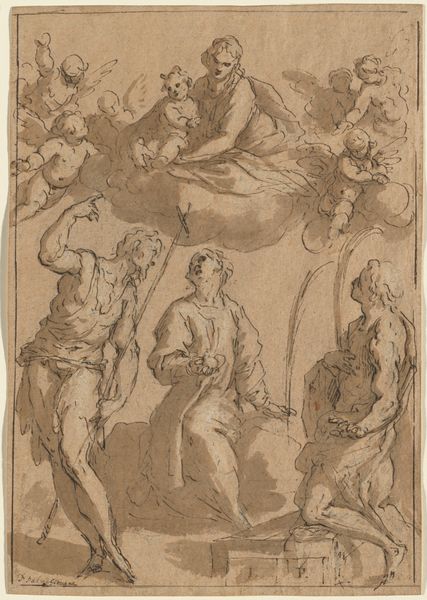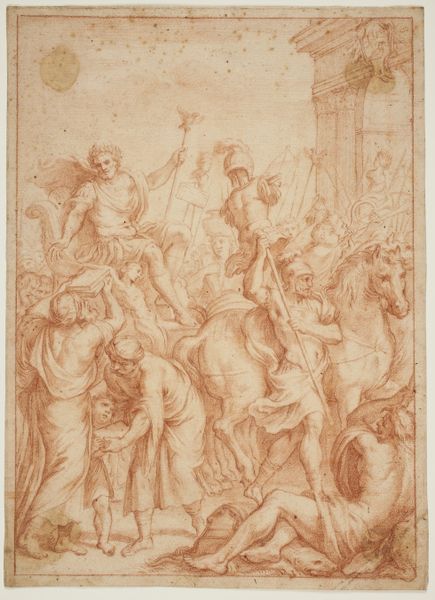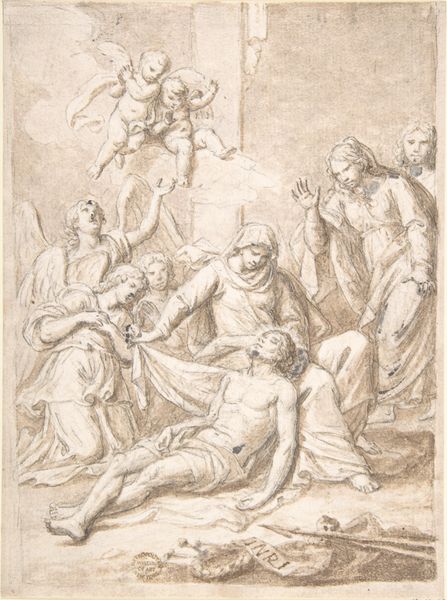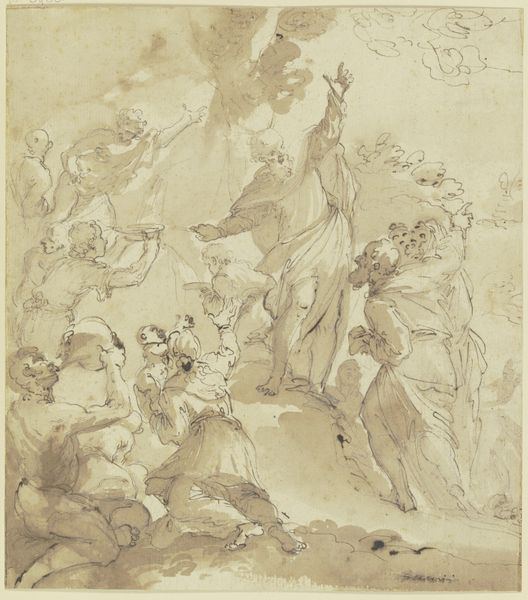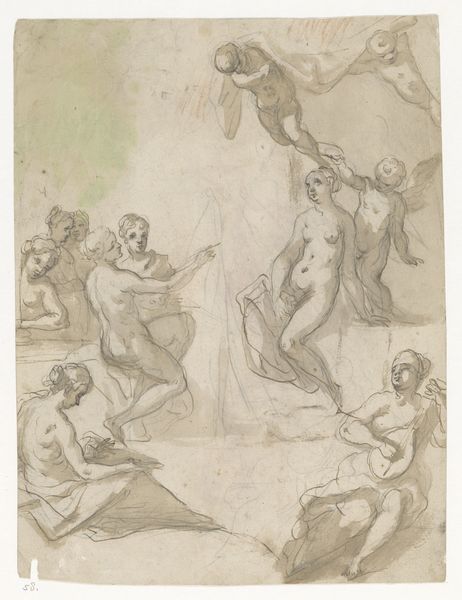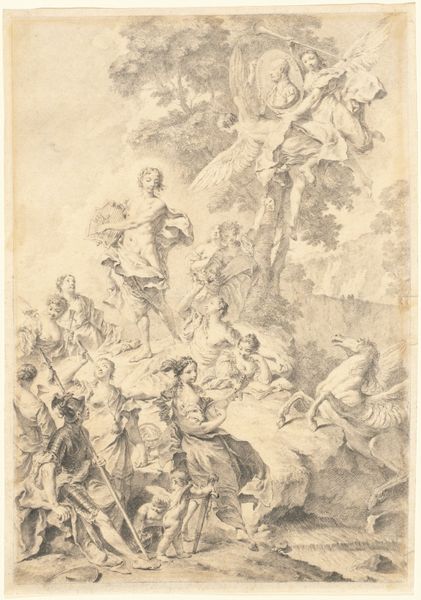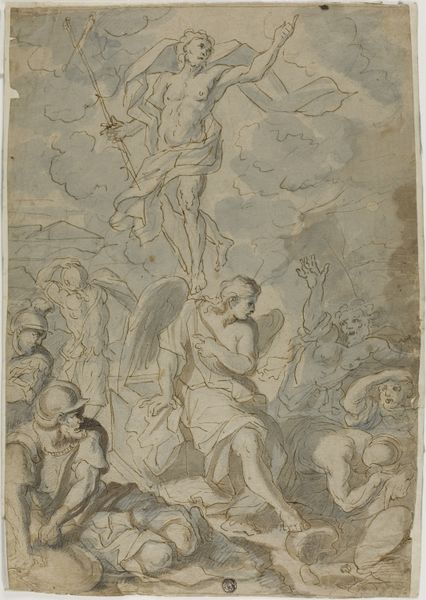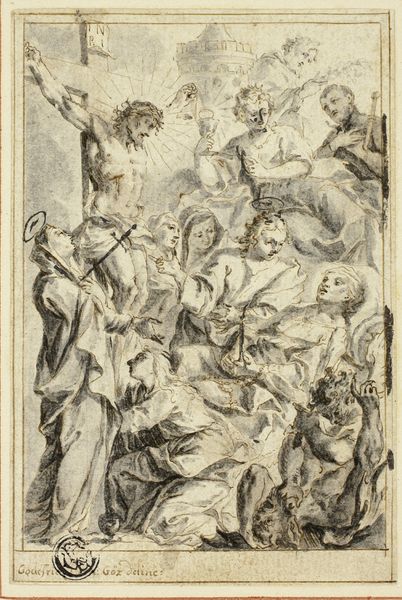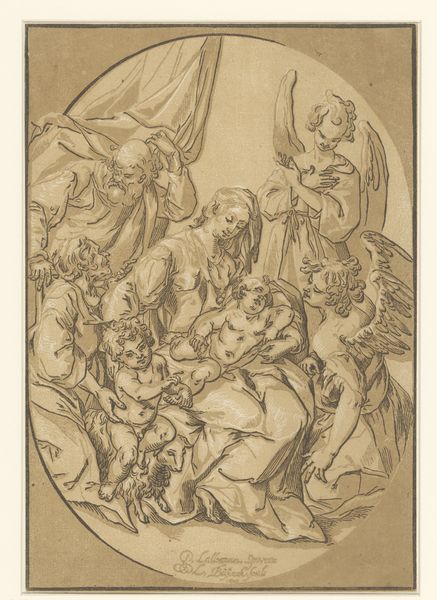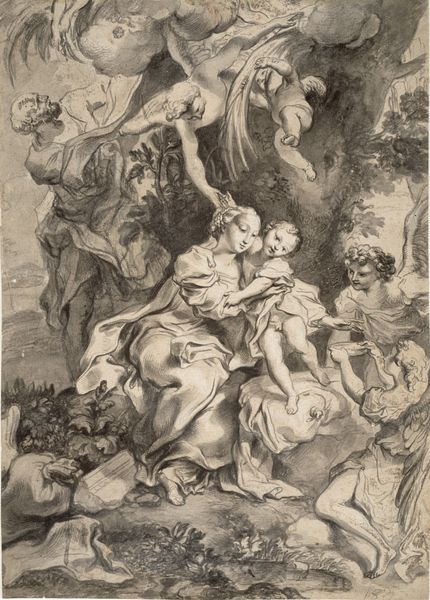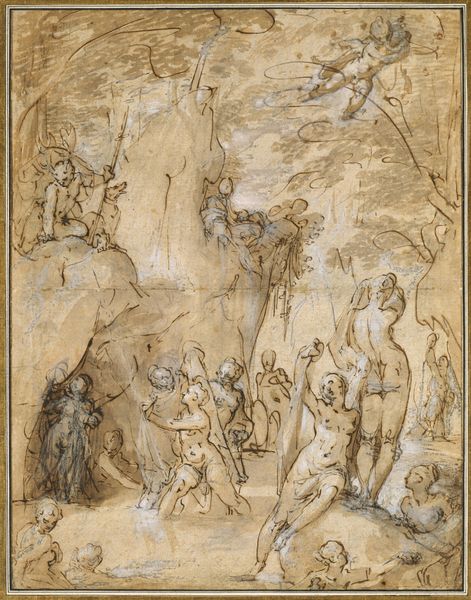
Die Muttergottes mit dem Jesuskind von Heiligen und Engeln umgeben, ein Engel gießt Wasser aus
0:00
0:00
drawing, ink
#
drawing
#
baroque
#
charcoal drawing
#
figuration
#
ink
#
history-painting
Copyright: Public Domain
Curator: Here we have a drawing from Antonio Balestra, currently held at the Städel Museum. It depicts the Virgin Mary and Child surrounded by saints and angels, with one angel pouring water from a vessel. Editor: My first impression is one of airy lightness; the tones and composition give it a dreamlike, celestial feel. It looks delicate. Curator: Exactly. And consider the context in which it was made; representations of the Virgin served to reinforce specific ideals of motherhood, piety, and feminine virtue within a deeply religious society. This image situates Mary not just as a mother, but as an intercessor and symbol of divine grace. Editor: Focusing on its production, I'm curious about Balestra's choice of drawing over, say, painting for such a monumental subject. The drawing allowed for quick alterations, perhaps exploring the theme of holy figures, examining labor division and workshop practice. We should explore further details about the inks used. Curator: It also echoes broader themes within Baroque art concerning access to grace, in the context of the shifting power dynamics between the church and individuals in that period. The angel pouring water from above visually emphasizes a top-down dispensation of blessings. How do we see this expressed through contemporary lens, given today’s dialogues around representation and equity? Editor: And what of the social conditions that afforded Balestra the resources and time to create such a drawing? The support of patrons shaped both its materiality and iconography. This all connects back to questions about labor—whose labor created the paper, ground the pigments, commissioned the work? Curator: Examining the interplay between medium and meaning reminds us to question assumptions around religious art and challenge narrow perspectives. We see it here situated among gender, religious devotion, and historical privilege, thus deepening our knowledge of art's relation to its society. Editor: Right, shifting our gaze from the purely devotional to the world of its making and circulation enriches the artwork for me. Highlighting the intersection of social factors and artistic choices leads to a richer engagement with art history.
Comments
No comments
Be the first to comment and join the conversation on the ultimate creative platform.
